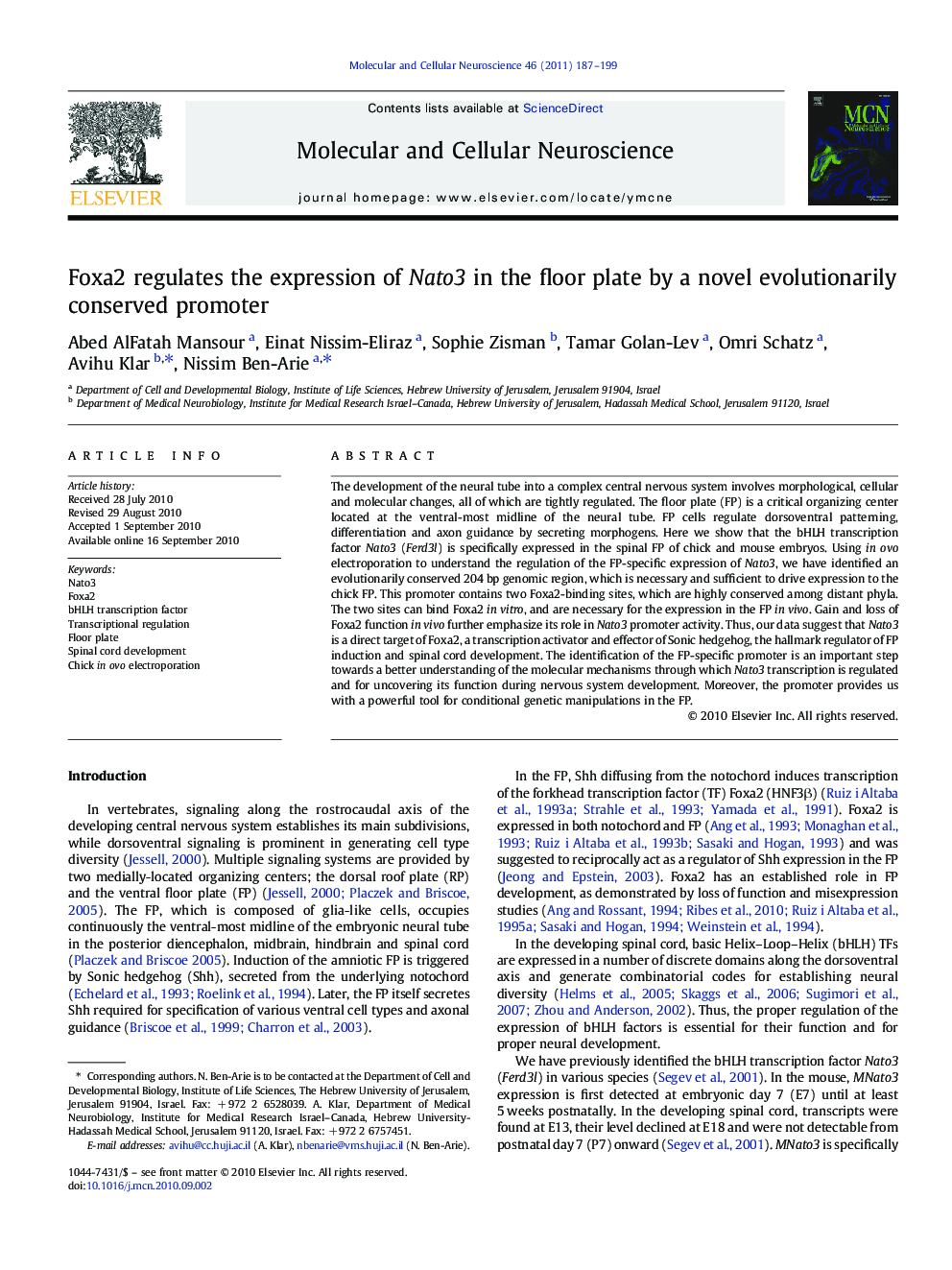| Article ID | Journal | Published Year | Pages | File Type |
|---|---|---|---|---|
| 10956636 | Molecular and Cellular Neuroscience | 2011 | 13 Pages |
Abstract
The development of the neural tube into a complex central nervous system involves morphological, cellular and molecular changes, all of which are tightly regulated. The floor plate (FP) is a critical organizing center located at the ventral-most midline of the neural tube. FP cells regulate dorsoventral patterning, differentiation and axon guidance by secreting morphogens. Here we show that the bHLH transcription factor Nato3 (Ferd3l) is specifically expressed in the spinal FP of chick and mouse embryos. Using in ovo electroporation to understand the regulation of the FP-specific expression of Nato3, we have identified an evolutionarily conserved 204Â bp genomic region, which is necessary and sufficient to drive expression to the chick FP. This promoter contains two Foxa2-binding sites, which are highly conserved among distant phyla. The two sites can bind Foxa2 in vitro, and are necessary for the expression in the FP in vivo. Gain and loss of Foxa2 function in vivo further emphasize its role in Nato3 promoter activity. Thus, our data suggest that Nato3 is a direct target of Foxa2, a transcription activator and effector of Sonic hedgehog, the hallmark regulator of FP induction and spinal cord development. The identification of the FP-specific promoter is an important step towards a better understanding of the molecular mechanisms through which Nato3 transcription is regulated and for uncovering its function during nervous system development. Moreover, the promoter provides us with a powerful tool for conditional genetic manipulations in the FP.
Related Topics
Life Sciences
Biochemistry, Genetics and Molecular Biology
Cell Biology
Authors
Abed AlFatah Mansour, Einat Nissim-Eliraz, Sophie Zisman, Tamar Golan-Lev, Omri Schatz, Avihu Klar, Nissim Ben-Arie,
